Third-Quarter External Storage Systems Sales: HPE, Huawei Grow While Dell, NetApp Slip
The good news is that while total enterprise external OEM storage systems revenue fell year over year, it declined less than it did in the second quarter. The bad news is that all-flash storage array revenue, which had been quite resilient even as the rest of the storage industry slipped, saw only anemic growth.

Storage Sales Continue To Fall
Revenue from the sale of branded storage systems sales to the enterprise market is not yet recovering. IDC, in its latest Worldwide Quarterly Enterprise Storage Systems Tracker, reported that total enterprise OEM storage systems revenue for the third calendar quarter of 2020 fell 1.4 percent over last year to nearly $6.8 billion, which is actually an improvement over the 5.0 percent drop the storage industry saw in the second quarter of 2020.
The drop in revenue came despite a spike in third calendar quarter external OEM storage capacity shipments of 9.6 percent over last year to 18.9 exabytes. That was significantly higher than the second-quarter 5.1 percent increase in capacity sold over last year’s second quarter.
One bright spot in the market was sales of ODM (original design manufacturer) storage systems to the hyperscale data center providers, said Greg Macatee, research analyst for infrastructure platforms and technologies at IDC.
“ODM vendors selling directly to hyperscale customers (i.e., ODM Direct) was once again a bright spot for the market,” Macatee said. “Collaboration tools and content delivery networks were key drivers of ODM sales as consumers continue to demand these types of at-home services on top of traditional enterprise-driven ODM Direct infrastructure consumption.“
Here is a look at the health of the branded enterprise storage industry and what‘s behind the numbers.
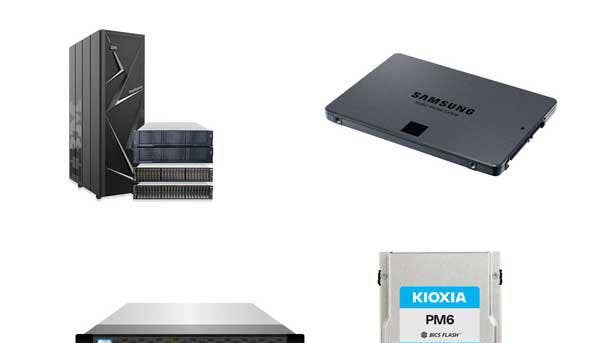
The Shine Comes Off Flash Storage Sales
IDC reported that sales of all-flash storage arrays in the third quarter rose a mere 0.5 percent year over year to $2.7 billion to account for 40 percent of total worldwide enterprise external storage system sales. However, in the second quarter, all-flash storage array sales actually rose a significant 7.7 percent over the previous year.
Sales of hybrid flash arrays, which combine both flash and spinning disk media, reached about $2.8 billion, which was down only 0.7 percent over last year. That compared with a year-over-year drop of 8.7 percent in the second quarter.
When all-flash storage and hybrid flash storage sales are combined, they account for 81 percent of the total worldwide enterprise external storage systems market, meaning only 19 percent of sales were from traditional spinning disk-only systems.
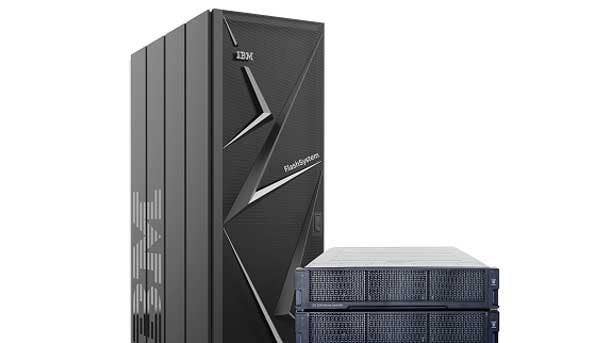
No. 5: IBM (tie)
IBM‘s third-quarter enterprise external OEM storage system revenue of $504.6 million gave the company the tie for the No. 5 spot, according to IDC, which was down from its fourth-place position in the second quarter. That revenue number was down a significant 21.6 percent over the third quarter of 2019, according to IDC.
While IBM did not break out actual storage revenue numbers during its third fiscal quarter 2020 financial report on Oct. 19, the company officially reported revenue for its systems segment of $1.3 billion, which was down 16 percent year over year. Systems hardware revenue, which includes its mainframe and Power-based servers and storage, was $900 million for the quarter, down 19 percent. IBM did say that its storage revenue fell 20 percent over last year.
IBM‘s storage business has been focused on building software and services based on its Spectrum line of software-defined storage technologies, and the company early this year replaced its incompatible legacy Storwize and A9000 storage families with a new FlashSystem all-flash array family.
Note that IDC actually declared a statistical tie between IBM and Hitachi Vantara for fifth place because the two have less than a 1 percent difference in market share.

No. 5: Hitachi Vantara (tie)
Hitachi Vantara had a tough third calendar quarter, with enterprise external OEM storage systems sales as reported by IDC of $376.2 million. That was down 10.3 percent from the $419.4 million IDC reported for the company last year.
Hitachi Vantara is a part of Japan-based Hitachi, but the company does not publicly release its own storage sales numbers.
The company this year has been focusing on building a new line of NVMe-based all-flash storage arrays. Early this month, it introduced its first midrange storage all-flash arrays, the VSP E590 and VSP E790, as a way to break out of its enterprise-only model. The two are compatible with the flagship VSP E990 introduced in April. All three include a new array of consumption models to help partners and customers act more like cloud providers.
Note that IDC actually declared a statistical tie between IBM and Hitachi Vantara for fifth place because the two have less than a 1 percent difference in market share.

No. 3: Huawei (tie)
As it was in the second quarter, China-based Huawei was the real bright spot in IDC’s third quarter‘s enterprise external OEM storage system sales. IDC reported Huawei sales in the quarter of $633.3 million, up a solid 23.7 percent over the $511.8 million IDC reported during the same period as last year.
Huawei’s sales growth was doubly impressive given that it has little if any enterprise storage sales in the all-important U.S. market because of U.S. government concerns about trusting a China-based company to be part of the country’s mission-critical infrastructure. However, according to IDC, Huawei’s solid position in China paid off for the company given that China’s storage revenue grew 21.2 percent in the third quarter versus last year, compared with the 5.5 percent decrease in the U.S. storage market.
Note that IDC actually declared a statistical tie between Huawei and NetApp for third place because the two have less than a 1 percent difference in market share.
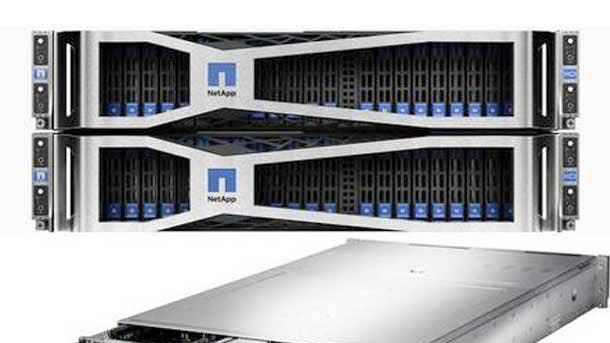
No. 3: NetApp (tie)
NetApp maintained its third-place position in IDC’s third-quarter 2020 enterprise external OEM storage systems sales list with revenue of $638.5 million, which was down 2.0 percent over the $651.7 million reported for the company in the third quarter of 2019. That represented a significant change for NetApp over the second quarter, when IDC reported its revenue fell 10.4 percent over the same period last year.
NetApp, the only storage-only vendor in the list of top six enterprise external OEM storage systems vendors, earlier this month officially reported total second fiscal quarter 2021 revenue of $1.42 billion, which was up about 3 percent over the $1.37 billion the company reported for its second fiscal quarter 2020.
NetApp’s continued focus on developing its cloud and its all-flash storage business paid off during the quarter. The company reported a second fiscal quarter 2021 public cloud services annualized revenue run rate of $216 million, which was triple that of last year, and an all-flash array annualized run rate of $2.5 billion, up 15 percent over last year.
Note that IDC actually declared a statistical tie between Huawei and NetApp for third place because the two have less than a 1 percent difference in market share.
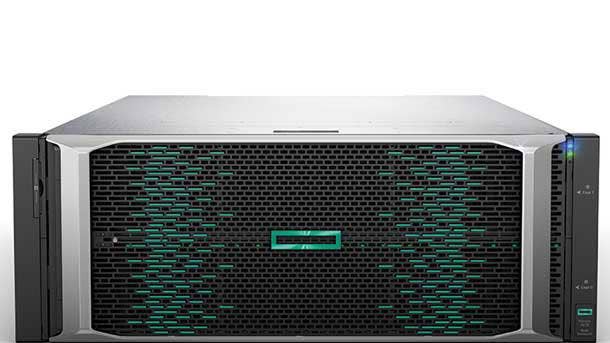
No. 2: Hewlett Packard Enterprises
HPE was one of only two branded vendors to see external storage systems sales rise in the quarter. For the third quarter, IDC reported HPE’s sales at $733.4 million, up 7.8 percent from the $680.2 million it saw last year. That helped HPE take away the sting from its 15.0 percent year-over-year drop in sales during the second quarter of 2020.
In terms of overall storage revenue, however, HPE on Dec. 1 officially reported total fourth fiscal quarter 2020 storage revenue of $1.2 million, which was down about 3 percent year over year.
Tom Black, senior vice president and general manager for HPE storage, told CRN via email that strategy, innovation, execution and customer experience came together in the quarter to fuel business growth.
“In a quarter when the overall market declined and Dell EMC, Pure Storage, IBM and Hitachi declined, HPE stands out with 7.8 percent year-on-year growth and solid gains in market share,” Black said. “HPE’s strategy of helping customers unlock the power of data with an Intelligent Data Platform is clearly working.”
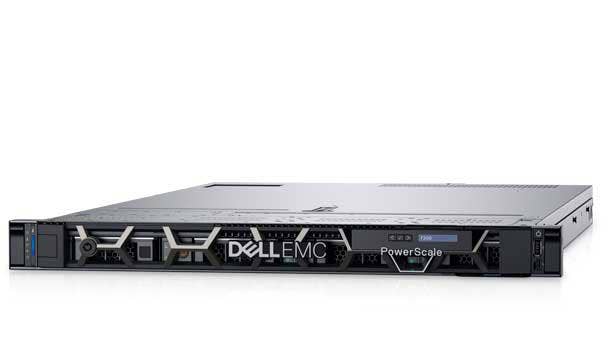
No. 1: Dell Technologies
Dell Technologies remained the No. 1 enterprise external OEM storage systems manufacturer despite a 6.1 percent drop in third-quarter 2020 sales compared with third-quarter 2019 sales. Dell’s revenue for the quarter reached $1.95 billion, which gave the company a comfortable 28.8 percent market share thanks to sales that were well over twice those of its nearest competitor.
Dell in late November officially reported that fiscal third quarter 2021 storage sales fell 7 percent to $3.86 billion. That figure accounts for all of Dell‘s storage sales, and not just those of its external storage systems.
Dell is banking on its new PowerStore midrange line, which replaces multiple incompatible legacy storage lines, for growth in its midrange storage business. The company in June also introduced Dell EMC PowerScale, a new family of storage systems that combines its OneFS storage operating system, best known as the technology behind its Isilon line, with its PowerEdge-based PowerScale all-flash and NVMe storage nodes